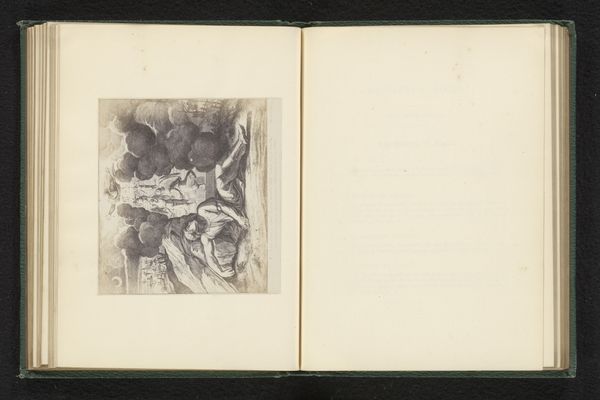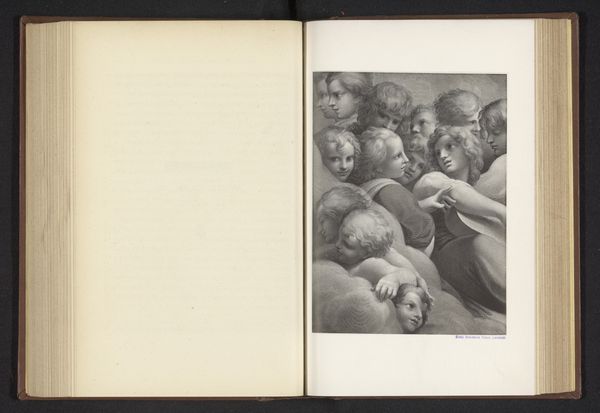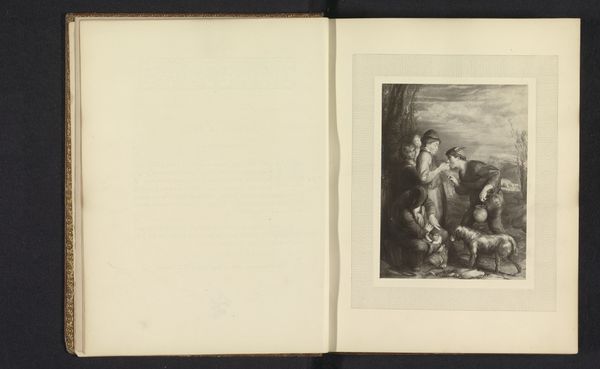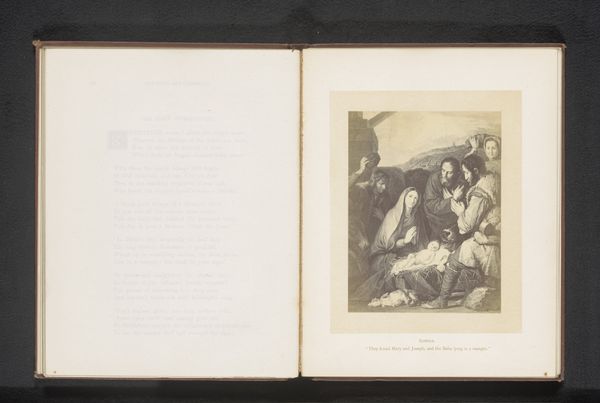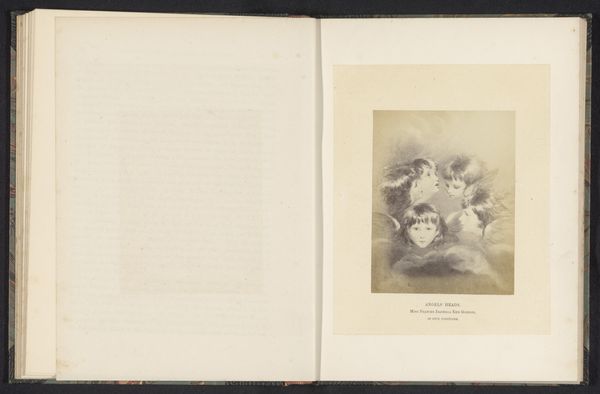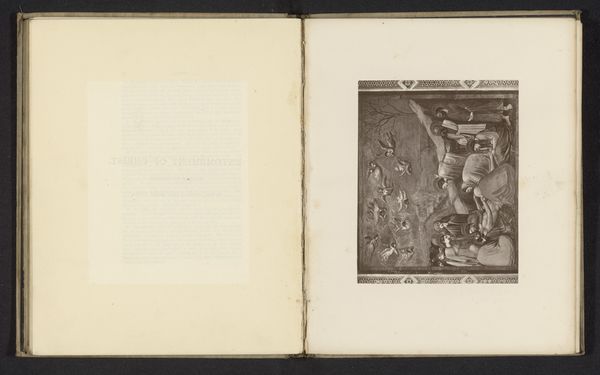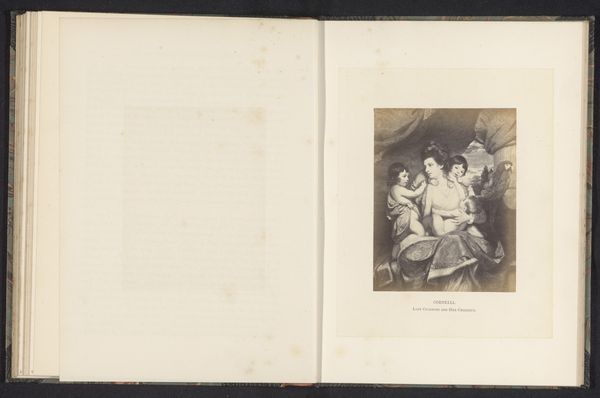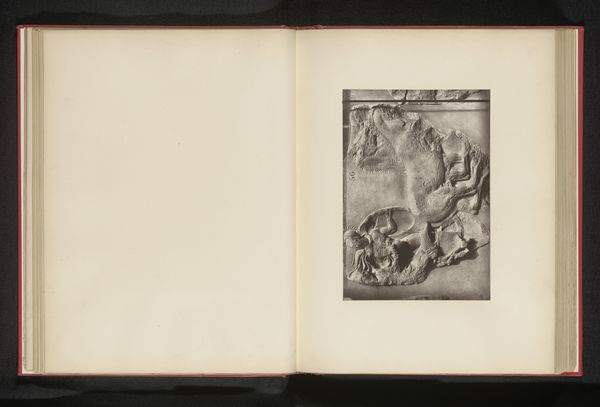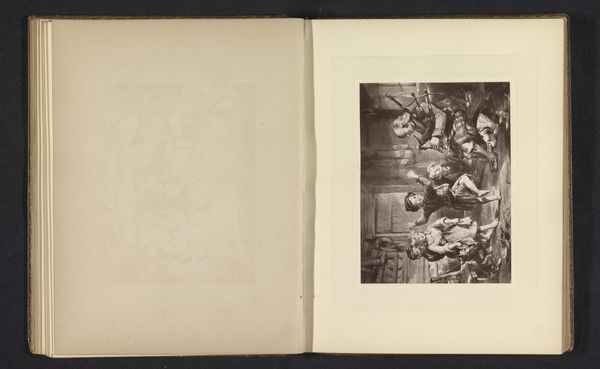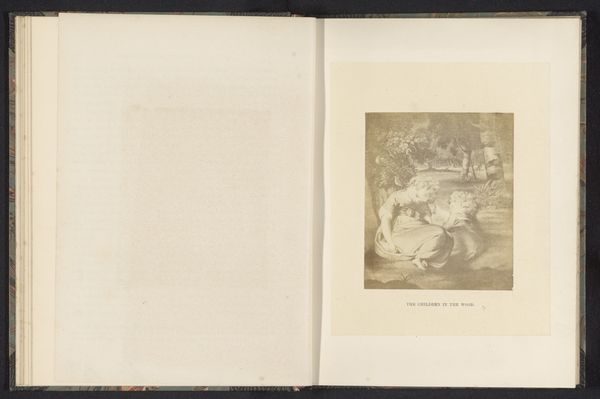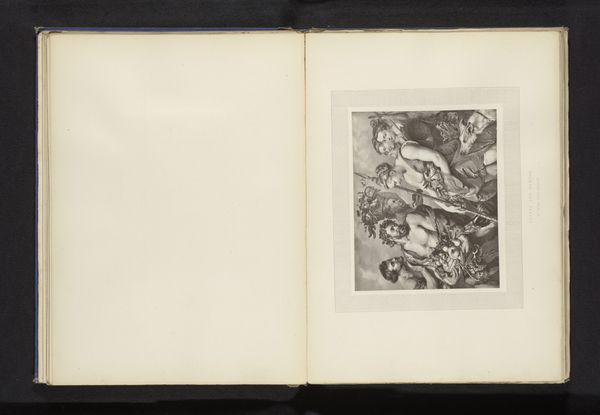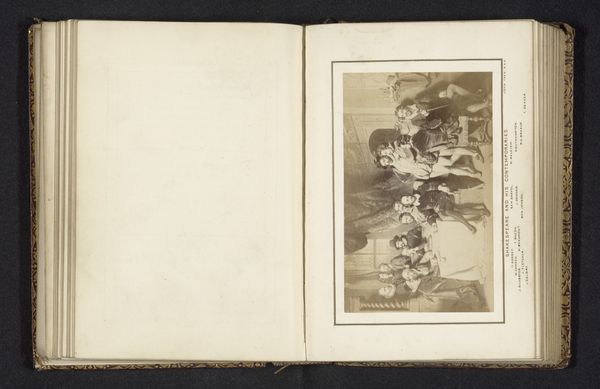
Fotoreproductie van een prent naar een schilderij, voorstellende Christus kroont Maria before 1876
0:00
0:00
print, engraving
#
allegory
# print
#
figuration
#
history-painting
#
italian-renaissance
#
engraving
Dimensions: height 124 mm, width 169 mm
Copyright: Rijks Museum: Open Domain
Curator: This is a photographic reproduction of an engraving, depicting Christ crowning Mary, likely created before 1876. It’s currently held at the Rijksmuseum. What's your initial reaction? Editor: A rather formalized embrace. It feels steeped in tradition, the soft shading and flowing robes giving it a very conventional piety. I sense an echo of Renaissance ideals in the composition, the use of human form to express an idea of heaven and divine relationships. Curator: The influence of the Italian Renaissance is unmistakable; in fact, this print draws inspiration from the art and conventions developed during that period. Specifically, this is rooted in history painting, but framed as an allegory, a commentary on power structures of its time. The positioning of Christ actively crowning Mary becomes more complex. Who benefits from these divine assertions? Editor: Precisely! That act of crowning carries significant symbolic weight, an overt assertion of power and divine right. The crown as a symbol dates back millennia, often linked with the sun and ultimate authority. What’s fascinating here is the image creates this kind of cultural memory, especially surrounding the female form within the framework of Western religion. Curator: Agreed. It's a powerful assertion of religious and societal hierarchies, which historically marginalize the feminine while simultaneously elevating a singular, almost desexualized version in Mary. The allegorical framing presents a theological construct, influencing the perception of women’s roles, both earthly and divine, for centuries after. Editor: Exactly, it’s that continuous thread through art history, influencing cultural norms, beliefs, gender roles, and even shaping the psychology of those within it. The positioning—him bestowing, her receiving—is part of that ongoing conversation of power, even now. Curator: Considering our moment, and moving towards dismantling these conventional hierarchies, it gives this old, formal embrace a new voice—one about reimagining structures, roles, and who holds the sceptre today. Editor: Well said! Viewing such works today allows us to actively dismantle and reconstruct ingrained beliefs; in understanding the visual language of power, we might more easily change the story.
Comments
No comments
Be the first to comment and join the conversation on the ultimate creative platform.
